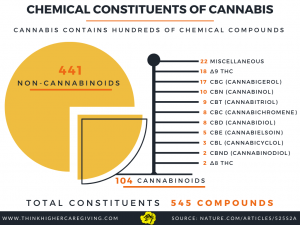Beyond Terpenes 101 | Preserving Terpenes In Cannabis
Cannabis products get their flavors, aromas, and even some of their effects from volatile organic compounds known as terpenes. You might recognize some of the most common terpenes in cannabis from essential oils, candles, perfumes, and many other aromatic everyday objects.
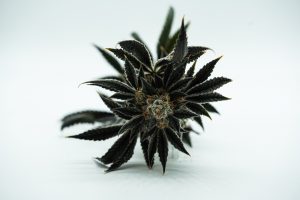
Indeed, nature is abundant with many thousands of terpenes.
However, the nature of these compounds means they are often the first to degrade after harvest, cannabis products included. So, what is the best way to preserve terpene content after a cannabis plant is harvested?
What Are Terpenes?
Let’s start with some terpenes 101. Terpenes are responsible for producing aromas and flavors in many plants, including cannabis.
While more than 20,000 of these compounds have been identified in nature, only around 200 appear in cannabis.
Terpenes are believed to contribute to the overall effects of the plant, alongside cannabinoids. In 2011, researchers concluded that terpenes work alongside cannabinoids to produce therapeutic effects in a synergistic process called "the entourage effect."
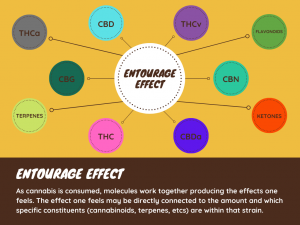
Terpenes are important, but these volatile organic compounds are also fragile; they are the first compounds to degrade after harvest and during manufacturing processes.
That’s why it’s so important to know how your cannabis was harvested, processed, and stored; all of these processes impact the stability of your cannabis product.
What Damages Terpenes?
Now that you have the terpenes 101 down pat, it’s time to explore what exactly damages these fragile compounds.
Terpenes degrade more easily than cannabinoids. In fact, more than 15% of cannabis-derived terpenes are considered "light," meaning they evaporate from the plant at room temperature.
Terpenes are more sensitive to heat, light, and oxygen. Each affects decomposition in different ways, contributing to what can often be a rapid decline in the compounds present in cannabis flower or a cannabis extract.





Heat: Heat kicks off a process known as decarboxylation, in which cannabinoids and terpenes synthesize into other compounds. For example, THCA from cannabis decarboxylates into THC. Left to additional exposure to heat (and light), THC can degrade into Cannabinol (CBN), greatly reducing its potency. The same is true for terpenes, many of which are destroyed during this process.
Humidity: High levels of humidity are likewise counterproductive to preservation. The higher the humidity, the more likely moisture is to break down the trichomes, or resin glands, of cannabis flower. Trichomes are home to most cannabinoids and terpenes; if they break down, the final product is weaker.
Light: Light, specifically ultraviolet (UV) rays, break down organic matter like cannabinoids and terpenes very quickly. As a result, drying and curing cannabis should be done in the dark as much as possible. Additionally, once cannabis is stored for transit, opaque containers provide the best protection against terpene degradation.
Oxygen: Prolonged exposure to oxygen is another common reason that cannabis potency, flavor, and aroma are lost. Oxygen is a particular cause of cannabinoid degradation, but also impacts terpenes; a 1960 study found that exposure to oxygen caused the terpene limonene, which is found in many plants like dill, celery, and lemons, to degrade. This is because oxygen causes terpenes to convert into terpenoids, which reduces the flavorful and aromatic qualities of the compounds, as well as the potential health benefits they offer.
Understanding the role each of these environmental factors plays in the degradation of terpenes (and cannabinoids) can help cultivators and extractors – as well as you at home -- preserve more of these precious compounds.
Terps And Temps: What Are Boiling Points, And Why Do They Matter?
Every terpene has its own characteristics, including at which temperature they degrade. That’s because each terpene has its own boiling point, meaning that they evaporate once a certain degree is reached. (This is the same logic applied to the manufacturing process, which we’ll talk more about below.) That’s why vaporization is vastly preferred over smoking cannabis to best preserve terpenes.
Here's a closer look at some of the most common terpenes found in cannabis plants and the role that temperature plays in their preservation and efficacy.
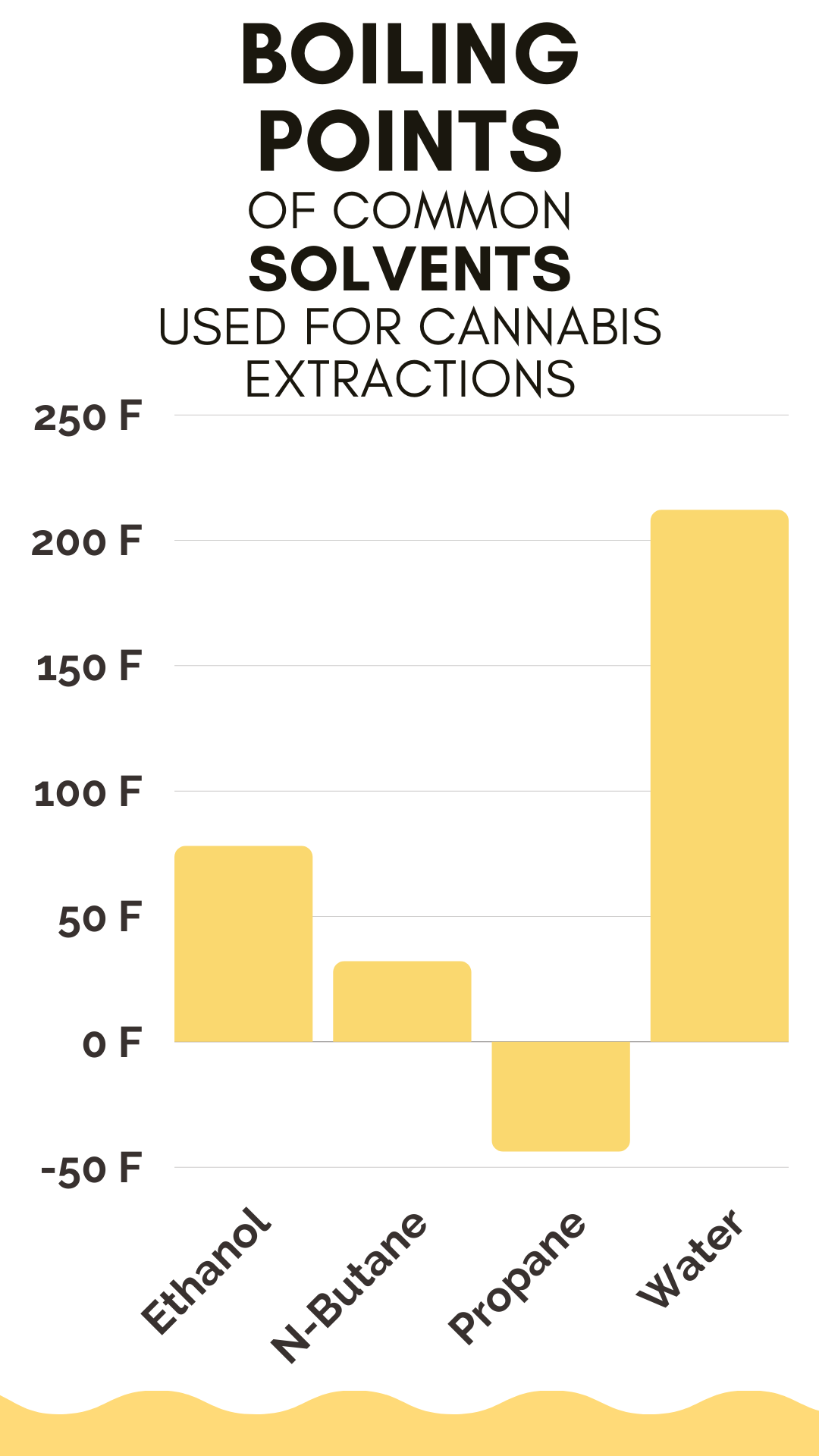
![]() Myrcene: Myrcene is a monoterpene believed to promote relaxation. It’s one of the most common terpenes found across all strains of cannabis, known for its earthy, herbal aroma and clove-like flavor. Myrcene can also be found in hops, thyme, and eucalyptus. Myrcene typically evaporates at 332.6°F.
Myrcene: Myrcene is a monoterpene believed to promote relaxation. It’s one of the most common terpenes found across all strains of cannabis, known for its earthy, herbal aroma and clove-like flavor. Myrcene can also be found in hops, thyme, and eucalyptus. Myrcene typically evaporates at 332.6°F.
![]() Pinene: Pinene supports an energetic cannabis experience. As its name suggests, it’s often found in pine trees as well as many varieties of cannabis. Pinene typically evaporates at 311°F.
Pinene: Pinene supports an energetic cannabis experience. As its name suggests, it’s often found in pine trees as well as many varieties of cannabis. Pinene typically evaporates at 311°F.
![]() Limonene: Looking for an uplifting and energetic cannabis strain? Look for one high in limonene, a common cannabis terpene found widely in citrus. Its flavors and aromas are, unsurprisingly, much like that of a lemon. Limonene typically evaporates at 348.8°F.
Limonene: Looking for an uplifting and energetic cannabis strain? Look for one high in limonene, a common cannabis terpene found widely in citrus. Its flavors and aromas are, unsurprisingly, much like that of a lemon. Limonene typically evaporates at 348.8°F.
![]()
Linalool: Like Myrcene, Linalool is thought to promote relaxing effects. It’s abundant in lavender and is responsible for that flower’s signature scent. Linalool typically evaporates at 388.4°F.
![]() Beta-Caryophyllene: Beta-Caryophyllene is a unique terpene and is believed to interact with your body’s endocannabinoid system (ECS) like phytocannabinoids in cannabis. It is also found in basil, cinnamon, and black pepper, producing a smokey, peppery aroma and spiced flavor. Beta-Caryophyllene typically evaporates at 266°F.
Beta-Caryophyllene: Beta-Caryophyllene is a unique terpene and is believed to interact with your body’s endocannabinoid system (ECS) like phytocannabinoids in cannabis. It is also found in basil, cinnamon, and black pepper, producing a smokey, peppery aroma and spiced flavor. Beta-Caryophyllene typically evaporates at 266°F.
How Terpenes Are Preserved During Harvest And Processing
To preserve as many terpenes (and cannabinoids) as possible while harvesting, drying, and curing, cultivators must act quickly to ensure they do not miss the narrow window in which optimal potency can be preserved.
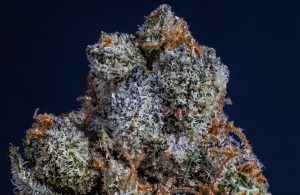
Exposure to higher temperatures, humidity, UV light, and oxygen will all take a toll on terpene content. But to go beyond terpenes 101, here’s how compound preservation can be maximized during harvest and processing:
- Cannabis is harvested, dried, and cured at temperatures lower than 70°F, here at Think Higher we like 66°F
- Humidity levels are best kept between 59% and 66% during harvesting, drying, and curing
- Cannabis flower is protected from prolonged exposure to light during harvesting, drying, and curing. Therefore cured in darkness.
- Once dried, cannabis flower is transferred to opaque air-tight containers for curing
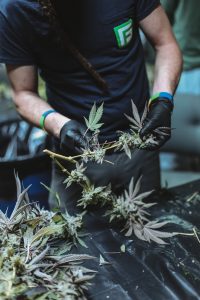
Additionally, cultivators can harvest their crops at different periods of time within the harvest which will influence final terpene content.
Age, maturation, and time of day being harvested can affect final terpene contents and ratios. Research has found that as a cannabis plant matures, total monoterpenes increases compared to sesquiterpenes.
Cultivators, however, face the challenge of not only worrying about terpene content but also cannabinoid content. Finding the right time to harvest a strain is important to maximizing a strain's potential.
Further, the cultivator can harvest the flower and immediately flash freeze the flower. This process preserves the bulk of the compounds immediately after harvest and prevents degradation by oxygen.
Flash freezing is typically done with liquid nitrogen or dry ice. Once completely frozen, the flowers are extracted to produce Live Resin products.
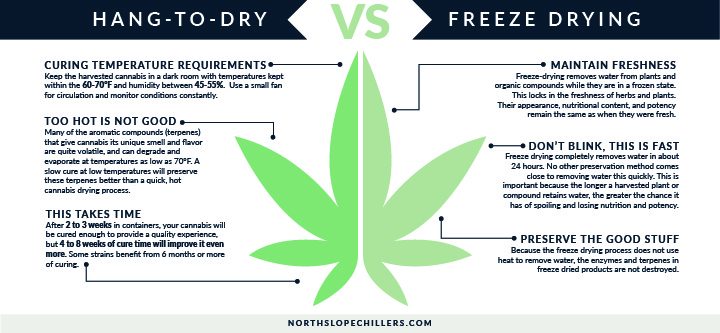
Beyond Terpenes 101: Preserving Terpene Content During Extraction
The extraction process is another opportunity for terpene degradation, and manufacturers must take care to preserve as many as possible. The type of solvent used, as well as the temperatures the flower is exposed to, are factors in how fast the terpenes degrade.
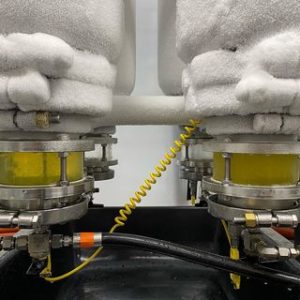
Extractors should use low temperatures (and solvents that support low-temperature extraction) to avoid excessive terpene degradation. For example, butane extraction only requires temperatures of 36°F to evaporate, while ethanol extraction requires up to 140°F to evaporate. Therefore, ethanol's boiling point overlaps with terpenes, meaning the use of ethanol as a solvent virtually necessitates the loss of a higher level of terpenes than butane.
Which Extracts Are The Best For Preserving Terpenes?
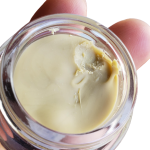
We’ve established terpenes 101: heat is damaging to these volatile compounds. Extracts like rosin, BHO, and PHO tend to preserve higher levels of terpenes because they are produced at low temperatures.
When rosin is pressed correctly, the terpenes do not deteriorate; the result is an extract with roughly the proportions of terpenes found in the source plant's flower.
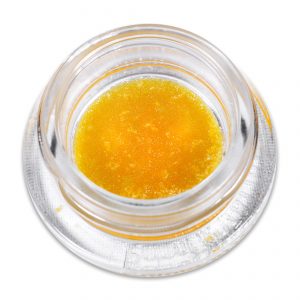
Extracts made with solvents such as Butane or Propane are another quality way to reserve higher terpene levels due to the low boiling points of these solvents.
Solvents sometimes have hidden benefits, even some extractors are unaware of. Propane for example, when used correctly, can be selective in grabbing more terpenes than cannabinoids or vice versa.
Additionally, some extractors choose to isolate myrcene, linalool, and other desired compounds, which are added back into the extract at the end of the process. This is typically done using carbon dioxide (CO2) as a solvent.

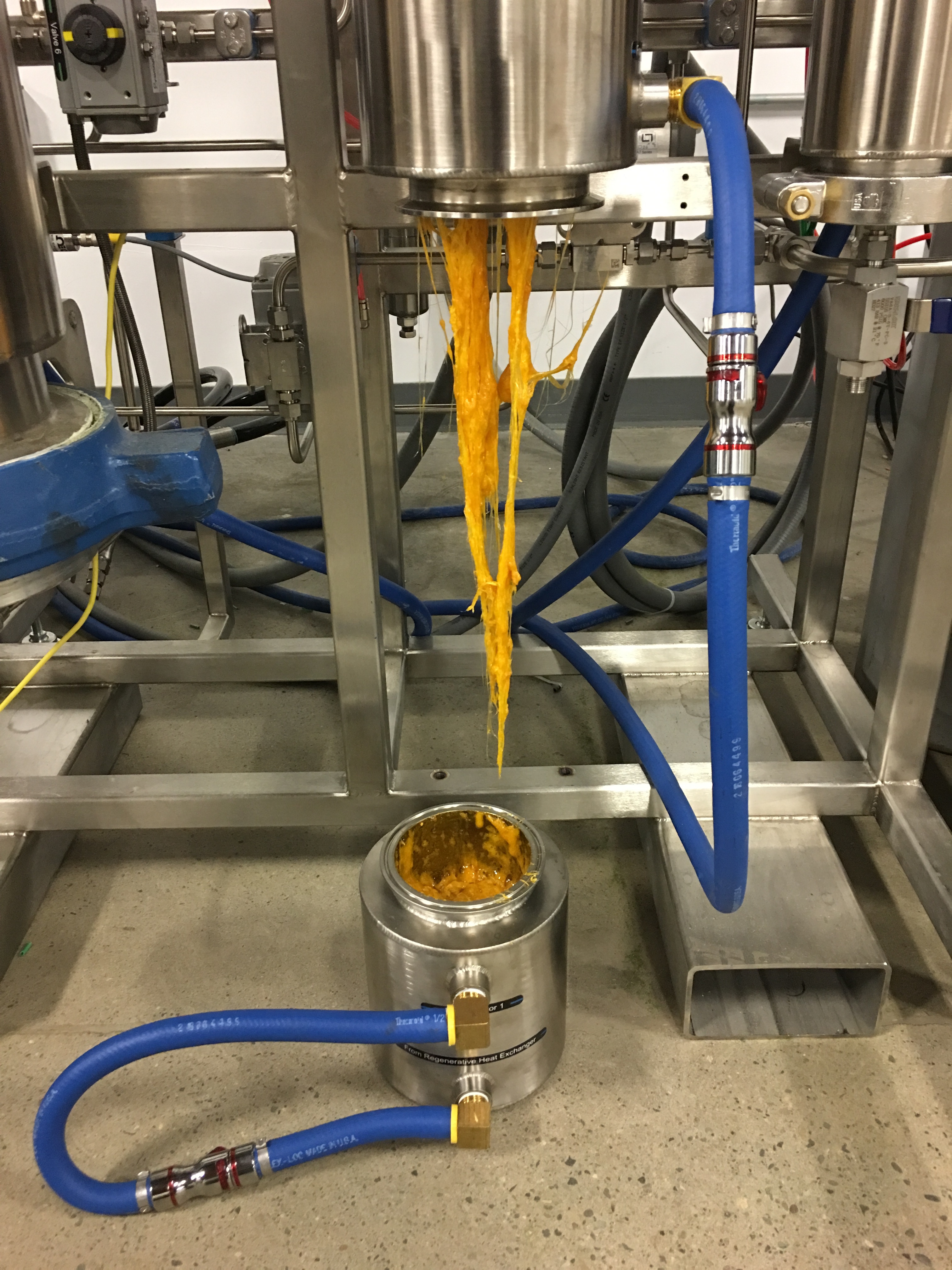
CO2, however, requires a pressure-based extraction process that destroys the cell walls of the plant, causing the release of fatty components.
While this process is effective at isolating and preserving terpenes, it is often at the cost of the quality of the final product. Further, CO2 extraction takes a significantly longer time than, say, butane extraction.
Similar But Not The Same
It is worth noting that two different extracts could contain the same number of terpenes, but their flavors and aromas might be different. This is because different extraction methods yield a final product with various byproducts.
Although the number of terpenes might be the same in two different types of extracts, the overall percentage would be different. The percentage relative to the whole extract is what matters most when it comes down to taste and terpyness!
Five Tips For Preserving Terpenes At Home
There is much in the way of terpene preservation that is out of your hands; it is up to cultivators and extractors to do things the right way before your cannabis product makes its way to your home. However, there’s plenty you can do to prevent further degradation. Incorporate these tips into your terpenes 101 routine:
- Store In A Cool, Dark Place: Light and heat are the natural enemies of terpenes, so keeping your cannabis stored in a cool, dark place will go a long way to preserving terpene content for the long haul. Consider a closet in an air-conditioned room or, better yet, store your product in an opaque container.

- Store In An Air-Tight Container: Exposure to oxygen causes terpenes to degrade more rapidly than they otherwise would. Store your terpenes in an air-tight container to prevent unnecessary exposure to oxygen.
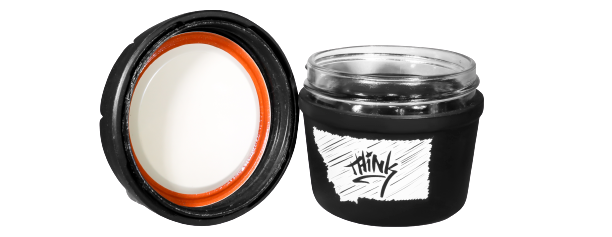
- Store In A Glass Container: Plastic is known to degrade terps and cannabinoids, reducing the potency and effectiveness of your cannabis product over time. Similarly, butane interacts with silicone, so storing butane extracts in a silicone container could have unintended effects on terpene content. Use a glass container whenever possible. This will keep your cannabis as aromatic and flavorful as possible; it will also help preserve cannabinoid content for long-lasting potency. Ask about Think Higher's Re:Stash Jars!!!

- Consume At The Right Temperature: When it comes time to consume your cannabis product, the temperature you use to vaporize or combust your product matters. Keep in mind the boiling points of terps when consuming, which is made easier by using an electronic vaporizer with temperature control or by using an enail while dabbing. Set the temperature to the right level to vaporize your terpenes without causing them to degrade instantaneously. Refer to the list above for the boiling points of the most common terpenes found in cannabis products.

Beyond Terpenes 101: Preserving Compounds With Good Products And Storage
If you purchase a high-quality cannabis product sourced from a responsible cultivator and processed by an experienced manufacturer, following these steps will guarantee that your cannabis product remains fresh, potent, and efficacious when you consume.
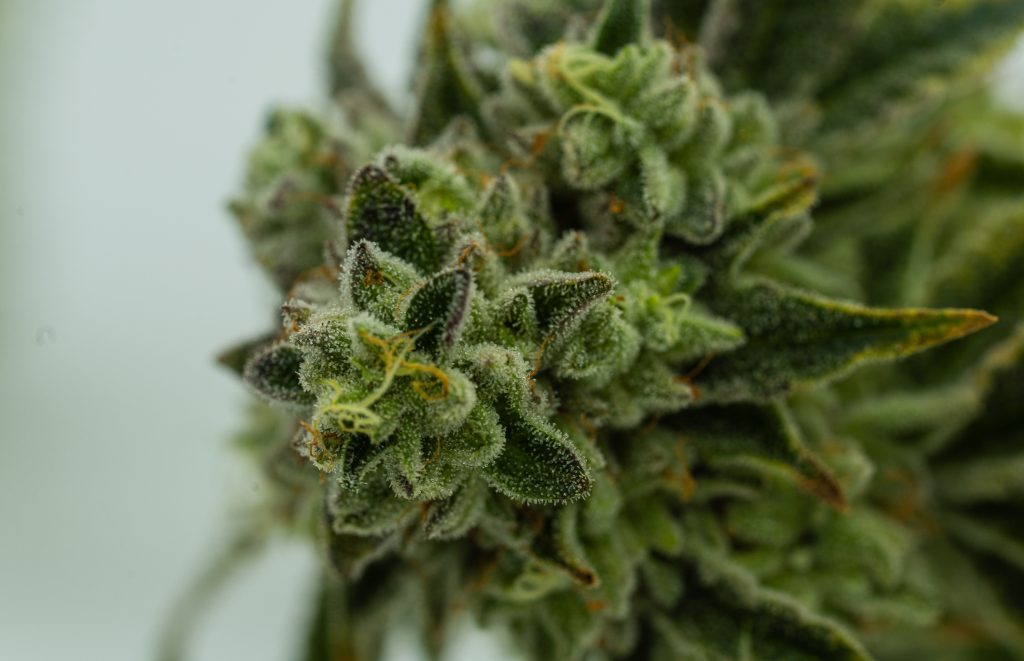
Naturally, over time, terpenes will degrade to some degree. However, proper storage and care means you will lose as little terpene content as possible; it also means you are more likely to retain cannabinoid potency until your next session.


